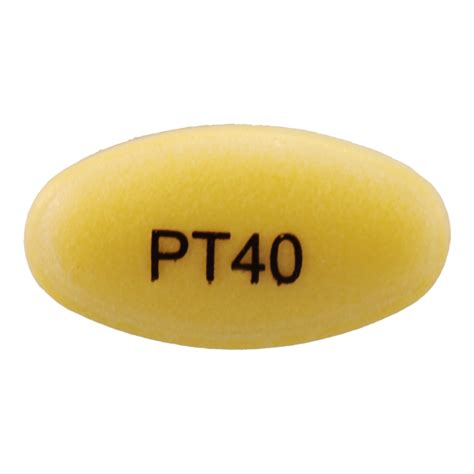Intro
Discover key facts about Pantoprazole 40mg, including its uses, side effects, and interactions, to manage acid reflux and stomach ulcers effectively with this proton pump inhibitor medication.
Pantoprazole 40mg is a widely used medication for treating various gastrointestinal issues, particularly those related to excessive stomach acid production. Understanding the facts about this medication can help individuals make informed decisions about their health. Here are some key points to consider:
Pantoprazole 40mg is a type of proton pump inhibitor (PPI) that works by reducing the amount of acid produced in the stomach. This mechanism of action is crucial for treating conditions like gastroesophageal reflux disease (GERD), where stomach acid frequently flows back into the tube connecting the mouth and stomach (esophagus). By decreasing acid production, pantoprazole helps alleviate symptoms such as heartburn and difficulty swallowing.
The effectiveness of pantoprazole 40mg in treating acid-related disorders has been well-documented in clinical trials. Studies have shown that this medication can significantly improve symptoms in patients with GERD and peptic ulcer disease. Furthermore, pantoprazole has been compared to other PPIs, demonstrating similar efficacy and safety profiles. This information is essential for healthcare providers when deciding on the most appropriate treatment option for their patients.
Another important aspect of pantoprazole 40mg is its potential side effects. Common adverse reactions include headache, diarrhea, and nausea. While these side effects are generally mild and temporary, it's crucial for patients to be aware of them to manage their expectations and report any concerns to their healthcare provider. Rare but more serious side effects can occur, such as vitamin B12 deficiency and increased risk of osteoporosis-related fractures, especially with long-term use.
Introduction to Pantoprazole 40mg

Pantoprazole 40mg is typically prescribed for a duration of 8 to 16 weeks, depending on the condition being treated. For example, in the case of GERD, treatment may be extended if symptoms persist. It's essential for patients to follow their healthcare provider's instructions regarding dosage and treatment duration to ensure the medication's effectiveness and minimize potential side effects.
How Pantoprazole 40mg Works
Pantoprazole 40mg works by irreversibly inhibiting the H+/K+ ATPase (proton pump) in the gastric parietal cells. This action blocks the final step of acid production, reducing gastric acidity. The medication's onset of action is relatively quick, with effects noticeable within a few days of starting treatment. However, it may take up to 4 weeks for pantoprazole to achieve its full therapeutic effect.Benefits of Pantoprazole 40mg

The benefits of pantoprazole 40mg include its ability to provide rapid and sustained relief from symptoms associated with excessive stomach acid. This medication is also effective in healing esophageal lesions caused by acid reflux. Additionally, pantoprazole 40mg can be used in combination with antibiotics to treat Helicobacter pylori infections, which are a common cause of peptic ulcers.
Potential Side Effects
While pantoprazole 40mg is generally well-tolerated, it can cause side effects in some individuals. Common side effects include: - Headache - Diarrhea - Nausea - Abdominal pain - DizzinessRare but more serious side effects may include:
- Vitamin B12 deficiency
- Increased risk of osteoporosis-related fractures
- Hypomagnesemia (low magnesium levels)
- Interactions with other medications, such as warfarin and clopidogrel
Precautions and Interactions

It's essential for patients to inform their healthcare provider about all medications they are currently taking, including over-the-counter drugs and supplements. Pantoprazole 40mg can interact with various medications, altering their efficacy or increasing the risk of side effects. For example, pantoprazole can decrease the absorption of ketoconazole and increase the levels of cilostazol.
Dosage and Administration
The dosage of pantoprazole 40mg varies depending on the condition being treated. For GERD, the typical dosage is 40mg once daily for 8 weeks. For peptic ulcer disease, the dosage may be 40mg once daily for 4 to 8 weeks. Patients should take pantoprazole at the same time each day, preferably in the morning, and should not crush or chew the tablets.Special Considerations

Pantoprazole 40mg is not recommended for individuals with a known hypersensitivity to the medication or any of its components. Additionally, patients with severe liver impairment should use pantoprazole with caution, as the medication is metabolized in the liver. Pregnant and breastfeeding women should also consult their healthcare provider before taking pantoprazole, as there is limited data on its safety in these populations.
Patient Education
Educating patients about the proper use of pantoprazole 40mg and its potential side effects is crucial for ensuring treatment adherence and minimizing risks. Patients should be informed about the importance of taking the medication as directed, not exceeding the recommended dosage, and reporting any side effects to their healthcare provider. Additionally, patients should be advised to avoid taking pantoprazole with other medications that may interact with it, unless directed by their healthcare provider.Conclusion and Future Directions

In conclusion, pantoprazole 40mg is a valuable treatment option for various acid-related disorders. Its efficacy, safety profile, and potential side effects make it a commonly prescribed medication. As research continues to evolve, it's essential for healthcare providers to stay updated on the latest guidelines and recommendations for using pantoprazole 40mg. Patients should also be empowered with knowledge about their treatment, enabling them to make informed decisions about their health.
Final Thoughts
Pantoprazole 40mg has revolutionized the treatment of acid-related disorders, offering patients a reliable and effective solution for managing their symptoms. By understanding the facts about this medication, including its benefits, potential side effects, and special considerations, patients can work closely with their healthcare providers to achieve the best possible outcomes.What is pantoprazole 40mg used for?
+Pantoprazole 40mg is used to treat various acid-related disorders, including gastroesophageal reflux disease (GERD) and peptic ulcer disease.
How long does it take for pantoprazole 40mg to work?
+Pantoprazole 40mg can start working within a few days, but it may take up to 4 weeks to achieve its full therapeutic effect.
Can I take pantoprazole 40mg with other medications?
+It's essential to consult your healthcare provider before taking pantoprazole 40mg with other medications, as it can interact with various drugs and alter their efficacy or increase the risk of side effects.
We invite readers to share their experiences or ask questions about pantoprazole 40mg in the comments section below. Your input can help others better understand this medication and its role in managing acid-related disorders. Additionally, feel free to share this article with anyone who may benefit from this information, and don't hesitate to reach out to your healthcare provider for personalized advice on using pantoprazole 40mg.
